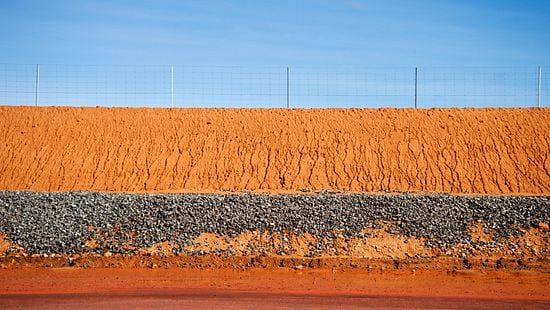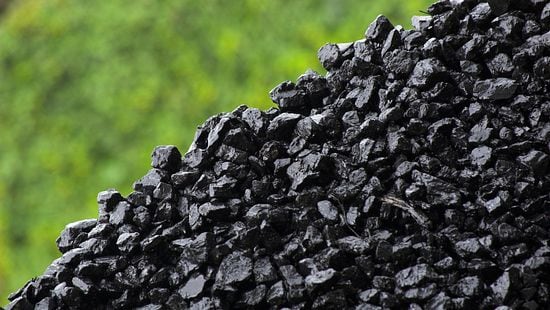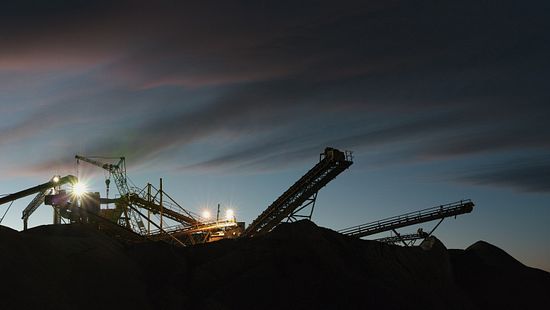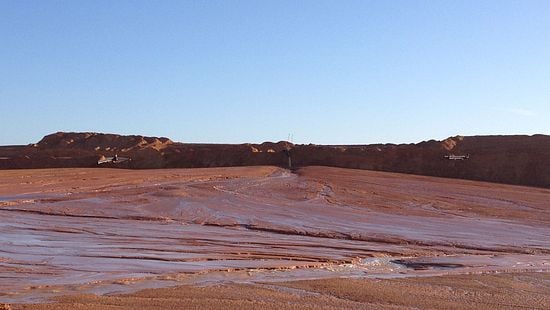
Tailings Management
Recover More Water and Extend the Life of Your Tailings Storage Facility
Creating a Sustainable Future: Your Partner for Economic and Responsible Tailings Dewatering Solutions
Nalco Water develops tailings management solutions that maximize the recovery of water and help to extend the life of your tailings storage facility. Our proprietary WaterShed binders treat the tailings slurry at the point of discharge to create a free draining structure and provide immediate water release, which is available for recovery and reuse. The use of WaterShed technology enhances beaching to maximize tailings storage facility capacity and further assist drainage. With a tailings management solution tailored to your unique operational needs, Nalco Water programs can help significantly extend the life of your tailings storage facilities - up to double the amount of a traditional tailings disposal solution – which ultimately helps to defer the heavy cost of building a new facility.
Comprehensive Tailings Disposal Solutions Across a Variety of Mineral Types
Regardless of the type of operation, Nalco Water offers a tailings management solution that will fit the specific parameters of the mineral and waste in your process. Nalco Water has proven success across a variety of different operational environments, with solutions for alumina red mud tailings, copper tailings, coal tailings, iron ore tailings, potash tailings, and more. Check out the case studies below to learn more about how a proprietary Nalco Water technology helped two different operations optimize their tailings disposal process.
Tailings Management Success Stories

Nalco Water Chemical and Mixing Technology Helps Coal Mine to Extend the Life of their Tailings Storage Facility
A US-based coal preparation plant faced a number of significant challenges due to a lack of coal tailings disposal capacity. The capacity challenges required the plant to either expand their storage footprint, which would require re-permitting and / or a potential capital investment of $300K, or find a new method of managing tailings.
Download the case study to learn how Nalco Water deployed a unique solution that combined POL-E-Z™ Liquid Flocculants with PARETO™ mixing technology to extend the life of the tailings impoundment and improve rapid water recycling.

Nalco Water Solution Helps to Increase Tailings Storage Facility Life and Increase the Recovery of Return Water
An Australian-based coal mine anticipated that their coal tailings volume would exceed the life of the tailings storage facility well before the designed completion. The mine approached Nalco Water for a solution that would ultimately help them extend the life of their tailings storage facility while increasing the recovery of return water.
Download the case study below to learn how Nalco Water helped them achieve this goal by bringing their footprint back into use 9 years early at a savings of $4.2M per year.

“Staying on Top of Tailings” – Nalco Water Featured in Global Mining Review
Keith Gibbs, resident expert on tailings management for Nalco Water, explores the opportunities to leverage a tailings dam as an asset rather than a liability. The article demonstrates that an optimized tailings management program can deliver a number of environmental and economic benefits, as well as improve the safety of the tailings storage facility.
PROGRAMS, PRODUCTS, EQUIPMENT AND SERVICES
Explore our Tailings Management Offerings
We couldn't find any results for "".


